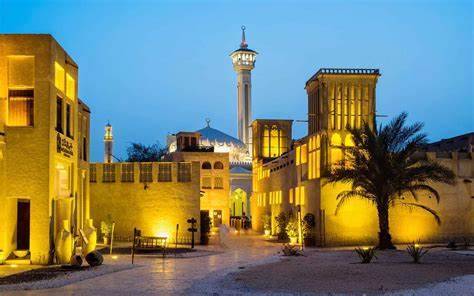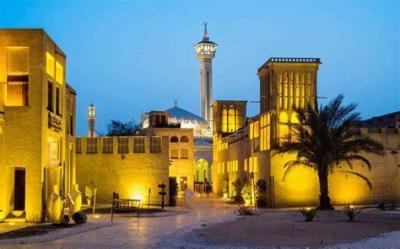While enjoying history and Italian food during a trip to Florence in 2015, former management consultant Nada Badran had an idea. Badran wanted tourists to experience culture and history in a similar way in Dubai, United Arab Emirates. The Middle Eastern city, built over the past fifty years against the backdrop of oil discovery in the Gulf in the 1960s, is very different from the city located in the Tuscany region of Italy, which inspired Badran.
Badran said, "I started looking at the local tourism scene, and I didn't think it was really special, as it caters to the needs of tourist hordes, and people who probably take buses, see landmarks, take some pictures, and then leave." While it's undeniable that skyscrapers, sprawling shopping malls, and enchanting beach resorts form the attractions that draw the majority of tourists to the city, Badran wanted to showcase the other side of a city rich in culture, history, and traditions—namely, Dubai, where she grew up.
In 2016, Badran founded her own tour company called "Wander with Nada" to show travelers "a different side of Dubai." She customizes her tours based on the interests of each visitor, but her favorite route is the "old city" of Dubai, a collection of small neighborhoods around Dubai Creek, where the emirate's story began and where Badran spent her childhood.
### Historic Neighborhood
Badran starts the tour in the Al Shindagha area, the neighborhood where the city's first homes were built. The houses feature small windows to keep the heat out, and they have countless small rooms around a central courtyard, designed to accommodate multiple generations of families under one roof. These homes have been transformed into museums that introduce people to various aspects of Emirati heritage, such as "Talli," a traditional embroidery skill recognized by UNESCO as an intangible cultural heritage in 2022, and the crafting of Arabic perfumes and their role in Emirati hospitality.
### Many Cultures
The influence of other cultures is part of the city's fabric, with Badran using the markets along the creek in Shindagha as an example. In the historic Al Fahidi neighborhood, one can wander through a maze of alleys and the former homes of Iranian merchants who settled there in the 1890s. Just over 10% of the original residences still exist, but like Shindagha, no one lives in them. They were renovated in the 1990s and transformed into shops, cafes, and small hotels.
Heritage is not only made up of historic buildings but also of the communities that build them. Architectural professor Jamal Bou-Saada noted in his research paper in 2014 on Dubai's urban heritage that the city's residents "bring life to the built environment," and thus social groups must be preserved alongside heritage sites. Bou-Saada explained that urban preservation does not necessarily mean preserving a building, but rather reviving its spirit and life.
### A Changing City
Although Badran feels deeply rooted in the city, which she has called home for most of her life, she has witnessed the transient nature of its inhabitants herself. She noticed many friends she made during school leaving, and her family, who moved to Dubai from Jordan in the 1980s, would eventually leave the city as well. However, as a frequent traveler, she also understands that people make the place, and she sought to make the residents of the city "an integral part" of her tours.
Badran facilitates conversations with artisans who inherited the crafts of perfume making or sewing from their parents. Through her in-depth knowledge of the city, Badran designs tour routes that include places she frequented throughout her years of living in the city. She added, "Time has not affected certain corners, and those are the parts I love to go to."
But things change, naturally. Through the narrow alleys surrounding the old Dubai market, which houses family-run shops of Indian origin, tourists will no longer find typical souvenir gifts. Instead, colorful garlands, Hindu statues, and prayer beads adorn the entrances. However, many shops have closed.
When asked about her feelings regarding the way the city is constantly changing, Badran said it makes her feel "humble." She affirmed that "Dubai revolves around openness and embracing the diversity that makes it unique."




